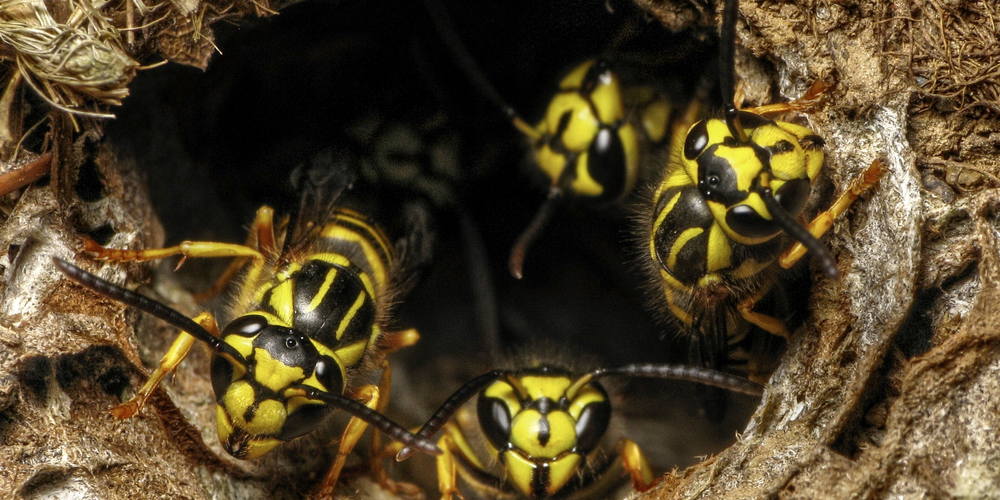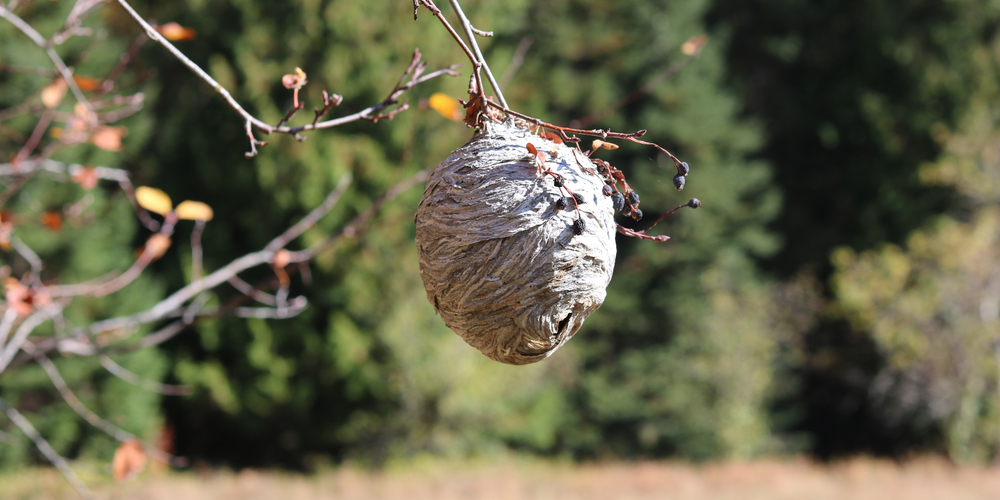When most people think of wasps, they think of the common yellow jacket. These stinging insects can be a real nuisance, and many people are curious about their nests. These yellow jackets can be spotted high up in trees and bushes, while some others build their nests in the ground.
Unfortunately, the presence of yellow jackets in your garden or landscape is not always a sign that they are nesting there. Yellowjackets are actually quite nomadic and will build their nests in various locations. These insects are also known to forage for food up to two miles from their nests.
One of the most common questions people have about yellow jacket nests is whether or not they have two entrances. Typically, yellow jacket nests may consist of more than one entrance – however, it is important to note that these yellow jackets aren’t the ones responsible for creating the second hole.
Most often than not, the colony’s queen will settle in an area with a pre-existing hole. It can be anything – an old chipmunk nest, a small animal burrow, rotting wood, or even an unused beehive.
Generally speaking, yellowjackets don’t stay in the same nest and use it the following year. The queen will usually find a new place to build her nest, and the old one is abandoned.
This means that if you have yellow jackets in your yard, it’s likely that there is a nest close by.
Types of Yellowjacket Nests
While there are many different types of yellow jacket nests, the most common include ground nests and aerial nests. Ground nests are typically built in areas with loose, sandy soil.
The entrance to these nests is usually small and can be easily overlooked. These types of nests can be found in gardens, lawns, and other areas where there is open ground.
Aerial nests, on the other hand, are built in trees, bushes, and other high places. The entrance to these nests is usually large and easy to spot.
What Should You Do When You Spot a Yellow Jacket Nest?
While it may be alarming to see a yellow jacket nest with two entrances, there’s no need to panic. These insects are not aggressive unless they feel threatened. If you do come across a yellow jacket nest, here are some things that you should do:
Observe From a Distance
Never get too close to a yellow jacket nest. These insects are very protective of their nests and will not hesitate to sting if they feel threatened.
Mark the Area
Once you’ve spotted the nest, mark the area to avoid it in the future. This is especially important if the nest is in a place where you or your family members frequent.
Do Not Block the Nest’s Entrance
It’s tempting to block the entrance to the nest to prevent the yellow jackets from coming out. However, this is not a good idea. If you block the entrance, these wasps will become more agitated and may end up attacking everyone in the area.
Use Diatomaceous Earth
Diatomaceous earth is a non-toxic powder that is effective against various pests, including yellow jackets. When the powder comes into contact with an insect, it causes the exoskeleton to break down, leading to dehydration and death.
To use diatomaceous earth to kill yellow jackets, simply sprinkle it around the entrance to their nest. The powder will work its way into the nest, killing the insects inside.
You may need to reapply diatomaceous earth every few days, but it is a safe and effective way to get rid of yellow jackets.
Call a Pest Control Professional
If you’re not comfortable dealing with yellow jackets, seeking help from a pest control professional is always an option. These experts have the knowledge and experience to safely get rid of these stinging insects. They will also be able to advise you on how to prevent yellow jackets from nesting in your yard in the future.
Do Yellow Jacket Nests Have Two Entrances?: Final Thoughts
The two openings in a yellow jacket nest are not created by the insects themselves. Instead, they are usually the result of the queen finding an existing hole to build her nest in.
If you come across a yellow jacket nest, it’s important to observe it from a distance and call a pest control professional if necessary.
If it’s away from your yard and poses no threat to your family, you may be able to leave it alone. However, if the nest is in a place where people or animals frequent, it’s best to have it removed as soon as possible.
Related Article: Do Yellow Jackets Die After They Sting?


